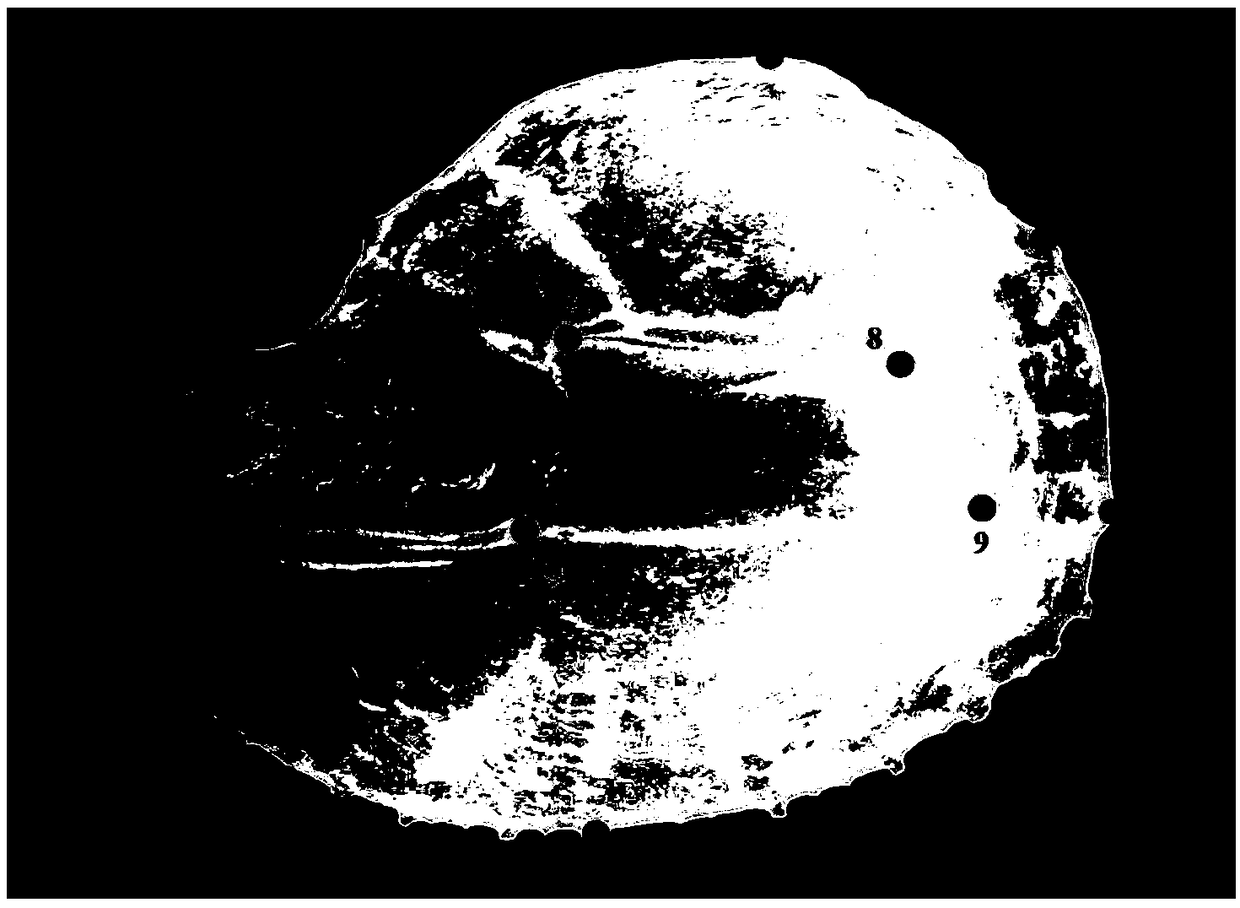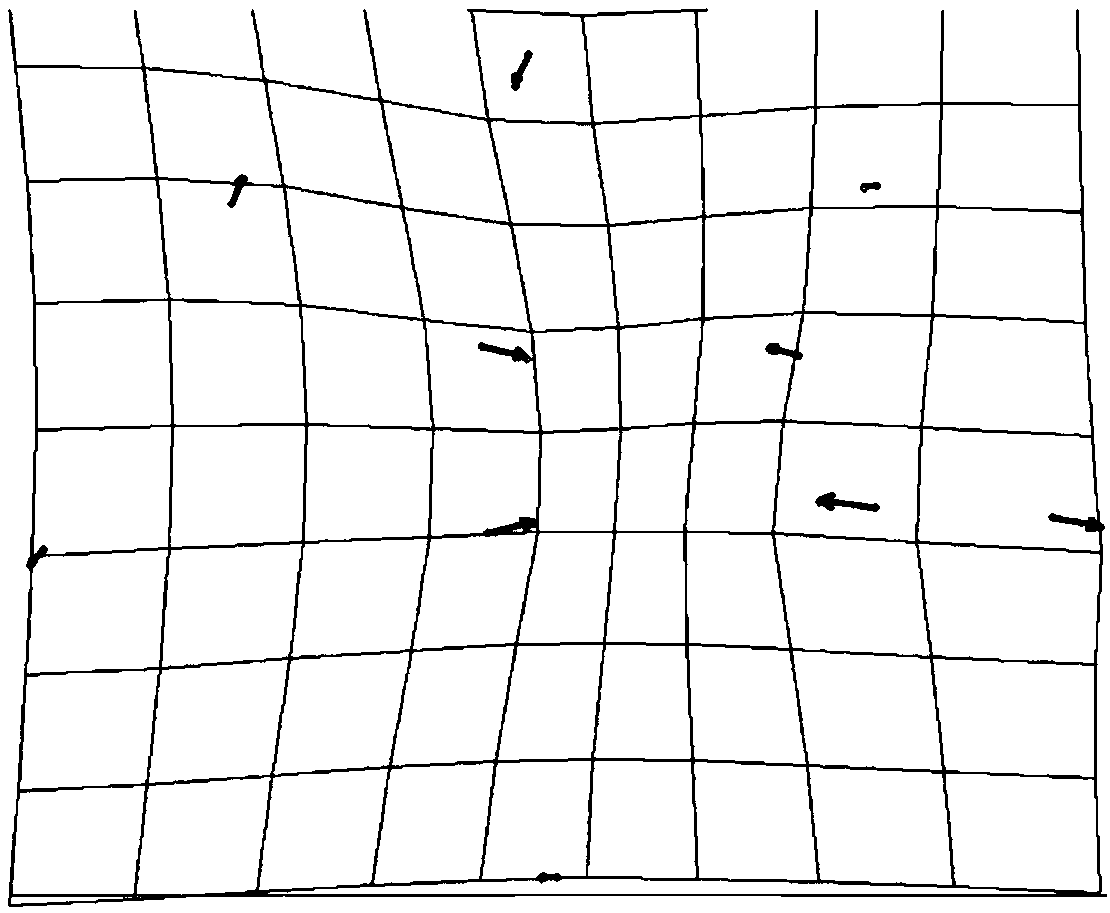Distinguishing method for coilia fishes population based on otolith morphology
A discrimination method and otolith technology, applied in character and pattern recognition, instruments, computer parts, etc., can solve the problems of high consumption of time, capital and workload, difficulty in investigation, and large span in time scale, etc. cost, overcoming the effect of low discrimination rate and high repeatability
- Summary
- Abstract
- Description
- Claims
- Application Information
AI Technical Summary
Benefits of technology
Problems solved by technology
Method used
Image
Examples
Embodiment 1
[0036] Embodiment 1: A method for discriminating fish populations of the genus Anchovy based on otolith morphology, using the following process steps:
[0037] (1) Collection: 10 anchovy and anchovy specimens were collected in the Kowloon Estuary in September 2016, and the dextral otoliths were removed after transported back to the laboratory as research objects;
[0038] (2) Shooting: Use a digital camera to take pictures of the complete otolith morphology on a flat plate with scales in the upward direction of the main groove of the otolith;
[0039] (3) Correction: Correct the magnification of all photos in the same direction on the computer, so that all photos are in the same direction and at the same magnification;
[0040] (4) Database establishment: Utilize tpsdig2 software to the coordinate point that takes and has processed the otolith picture establishment, such as figure 1 As shown, obtain the x and y coordinate values (2D) of the landmark points, establish the co...
Embodiment 2
[0045] Embodiment 2: A method for discriminating fish populations of the genus Anchovy based on otolith morphology, using the following process steps:
[0046] (1) Collection: 10 short-jawed anchovy were collected in Poyang Lake in July 2016, and 10 anchovy were collected in Taihu Lake in June 2017. After transporting them back to the laboratory, the right sagittal otoliths were extracted as research objects;
[0047] (2) Shooting: Use a digital camera to take pictures of the complete otolith morphology on a flat plate with scales in the upward direction of the main groove of the otolith;
[0048] (3) Correction: Correct the magnification of all photos in the same direction on the computer, so that all photos are in the same direction and at the same magnification;
[0049] (4) Database establishment: Utilize tpsdig2 software to the coordinate point that takes and has processed the otolith picture establishment, such as figure 1 As shown, obtain the x and y coordinate values ...
Embodiment 3
[0054] Embodiment 3: A method for discriminating fish populations of the genus Anchovy based on otolith morphology, using the following process steps:
[0055] (1) Collection: 10 Anchovy were collected in May 2017 in the Yangtze River Estuary, and 10 Anchovy were collected in Oujiang Estuary in August 2008. They were transported back to the laboratory and the right otoliths were taken as research objects. ;
[0056] (2) Shooting: Use a digital camera to take pictures of the complete otolith morphology on a flat plate with scales in the upward direction of the main groove of the otolith;
[0057] (3) Correction: Correct the magnification of all photos in the same direction on the computer, so that all photos are in the same direction and at the same magnification;
[0058] (4) Database establishment: Utilize tpsdig2 software to the coordinate point that takes and has processed the otolith picture establishment, such as figure 1 As shown, obtain the x and y coordinate values ...
PUM
 Login to View More
Login to View More Abstract
Description
Claims
Application Information
 Login to View More
Login to View More - R&D
- Intellectual Property
- Life Sciences
- Materials
- Tech Scout
- Unparalleled Data Quality
- Higher Quality Content
- 60% Fewer Hallucinations
Browse by: Latest US Patents, China's latest patents, Technical Efficacy Thesaurus, Application Domain, Technology Topic, Popular Technical Reports.
© 2025 PatSnap. All rights reserved.Legal|Privacy policy|Modern Slavery Act Transparency Statement|Sitemap|About US| Contact US: help@patsnap.com



